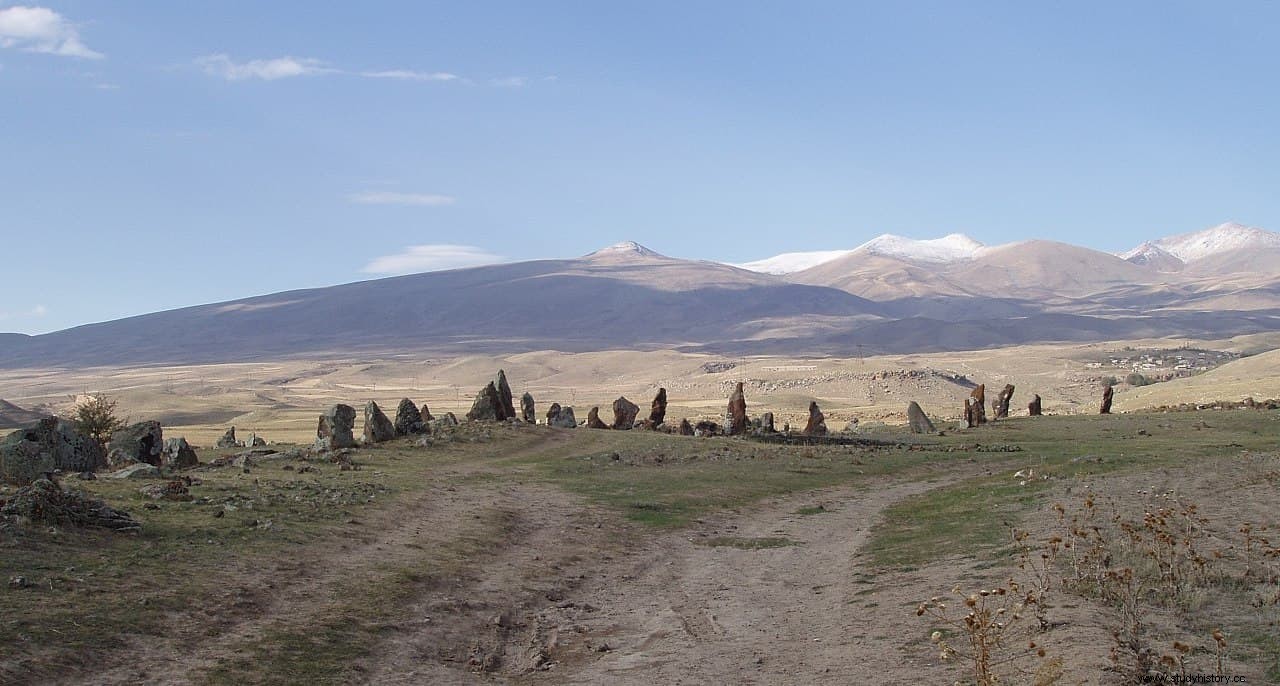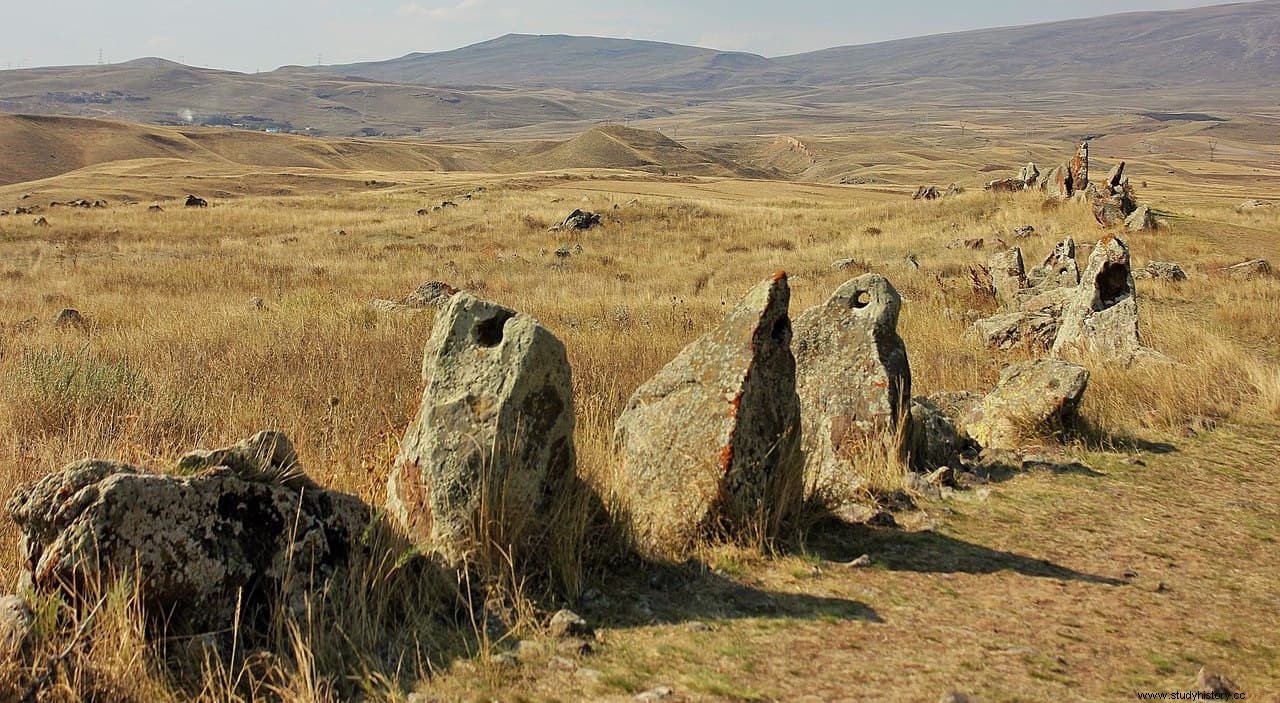The archaeological site of Carahunge, also called Zorats Karer, Karahunj or Carenish, is located in the Armenian province of Syunik, in the southwest of the country, and on a rocky promontory in the middle of a mountainous plateau at an altitude of 1,770 meters near the city of Sisian .
The different names by which it is known describe the characteristics of the place, full of prehistoric menhirs. Carahunge would derive from the Armenian words kar (stone) and hoonch (sound), i.e. talking stones , because many of them have perforations made at different angles through which the wind produces sounds. And Zorats Karer means standing stones .

The site is 7 hectares in size and consists of a central circle of 40 menhirs around a central chamber (identified as a tomb), with a north arm, a south arm, and a third north-east alignment that crosses the circle. In addition to numerous scattered stones in no apparent order. In total there are about 223 stones between menhirs, set stones and funerary cists.
The dimensions of the stones, which are made of basalt, vary between 0.5 and 3 meters high, with weights that reach up to 10 tons. Some 84 have a circular hole, although only 37 of them remain standing.
However, it is not known exactly if these holes are of prehistoric origin or not. At their narrowest point they are about 5 centimeters in diameter and up to 20 centimeters deep. There is also no consensus on the function of the stones and the site in general.

One hypothesis explains that the holes served to facilitate the transport of the stones. It is based on the fact that they are rounded on the outside, with wear that is greater in the direction in which it would make sense to pull the stones with ropes. But that doesn't explain why only some of the stones have them, or why others have multiple holes.
Some researchers have linked the standing stones with astronomical observation, and following this hypothesis in 2004 the Armenian parliament officially named the site Karahunj Observatory . In this sense, the radio astronomer Paris Herouni and her team, who examined the place between 1994 and 2001, believed that Carahunge is the oldest astronomical observatory in the world.

Archaeologists from the University of Munich, who studied the site in the year 2000, concluded that it was a necropolis used from the mid-Bronze Age (20th-16th centuries BC) to the Iron Age (12th centuries). -XIX B.C.), as they found 30 chamber tombs from that period, as well as remains of a settlement wall. Clay pots, necklaces, bronze earrings, daggers, and arrowheads were found in the tombs.
Armenian historians date the stones and the site to about 7,500 years old, far older than Stonehenge and other European megalithic monuments. But scholars do not agree on its antiquity. Some date the tomb in the center of the circle to the early 1st century BC, but do not explain why rocks were placed around it.

During the Hellenistic-Roman period (3rd century BC-3rd century AD) a settlement was built on the site and a stone and clay wall was erected to protect it. Some of the stones erected to reinforce this wall are still standing.
